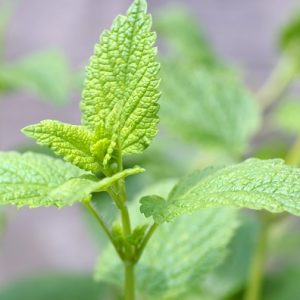
More evidence that low-calorie sweeteners are bad for your health
Studies show that artificial sweeteners can raise the risk of hypertension, metabolic syndrome, type 2 diabetes and heart disease, including stroke.

Natural Health News — Most people know lemon balm (Melissa officinalis) for its calming, soothing and healing properties.
But new research from Japan suggests it may also have properties which help maintain healthy circulation and skin elasticity
Japanese scientists were looking for food and plant substances that could inhibit the formation advanced glycation end-products (AGEs), by-products of metabolism that are associated with increased oxidative stress and inflammation. In particular the AGE pentosidine increases with age and correlates with the degree of skin and artery stiffness. Yellowing skin associated with ageing also may be due partly to glycation.
The first step was to evaluate 681 plant extracts for antiglycation activity. Among the 22 possible candidate plants, 17 species exhibited higher activity against pentosidine than the antiglycation agent aminoguanidine.
Four of these (rosemary, thyme, cat’s whispers and lemon balm) belonged to the Lamiaceae family and were rich in the AGE fighting substance, rosmarinic acid. The researchers chose to study lemon balm because of its safety, taste, stable supply, and adaptability to beverage form.
» Lemon balm is well known for its ability to calm the mind. But it is also rich in substances that can support physical health as well
» One these is rosmarinic acid and in a recent test, Japanese scientists found that daily intake of lemon balm tea helped improve signs of arterial stiffness.
» That’s because rosmarinic acid helps reduce toe formation of advanced glycation end-products (AGEs), by-products of metabolism that are associated with increased oxidative stress and inflammation.
» This reduction is AGEs also had another effect – better skin elasticity and colouring.
Objective evidence
The next step was to study the benefits of lemon balm in people. The scientists divided a group of 28 people, men and women, into two groups. One group was given barley tea as a control substance. The other was given lemon balm tea (made using 3.23g tea bags which they were instructed to brew in 200ml of water for 5 mins). Participants did not take any other herbs during the trial.
The researchers were looking for evidence of suppressed glycation-associated reactions in tissues as well as things like skin colouration and elasticity.
Although the paper does not say how much tea was drunk daily, it does suggest that those who had a higher intake benefitted more.
For example, the more lemon balm tea the participation drank each day the more resistant the collagen and elastin fibres in their tissues were to the degenerative effects of AGEs.
After 6 weeks arterial stiffness – as measured by brachial-ankle pulse wave velocity (baPWV) – was lower in the lemon balm group – but not in the barley tea group, though there were no differences in either systolic or diastolic blood pressure between the groups.
Objective testing showed that skin colour improved in the lemon balm group compared to the barley tea group. In addition skin elasticity improved slightly in the lemon balm group – but only in the women.
Although a small study the findings are encouraging suggesting that daily lemon balm tea, and specifically the rosmarinic acid it contains, is a pleasant and effective way to improve arterial health and circulation that that these improvements that can be observed through healthier looking skin.

Please subscribe me to your newsletter mailing list. I have read the
privacy statement